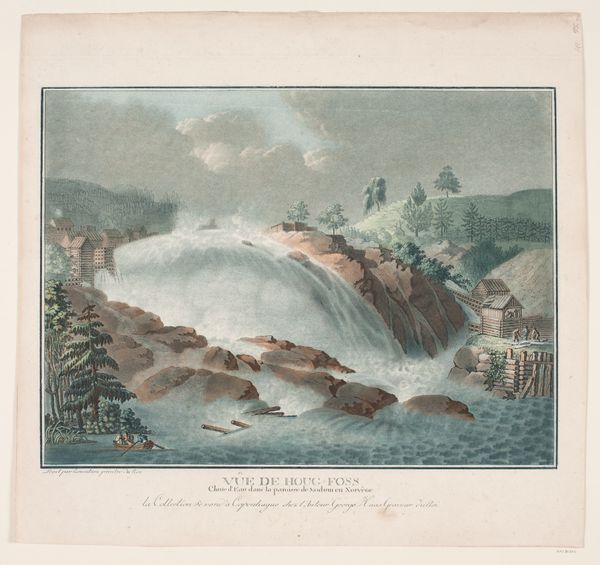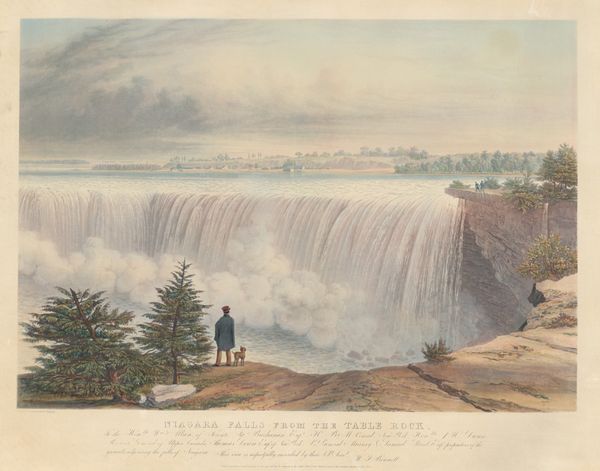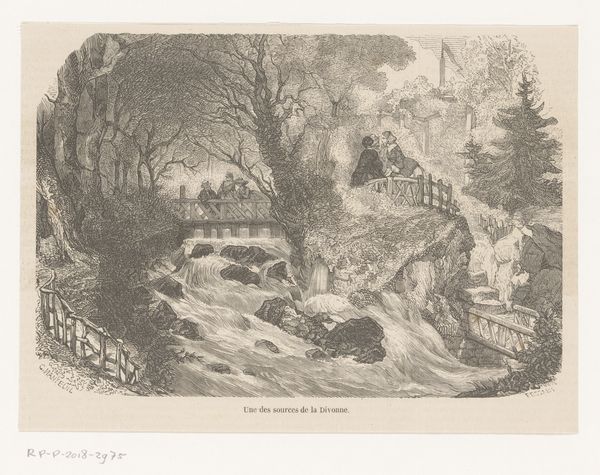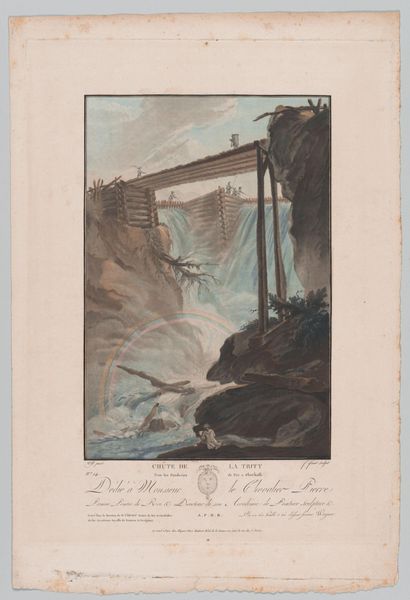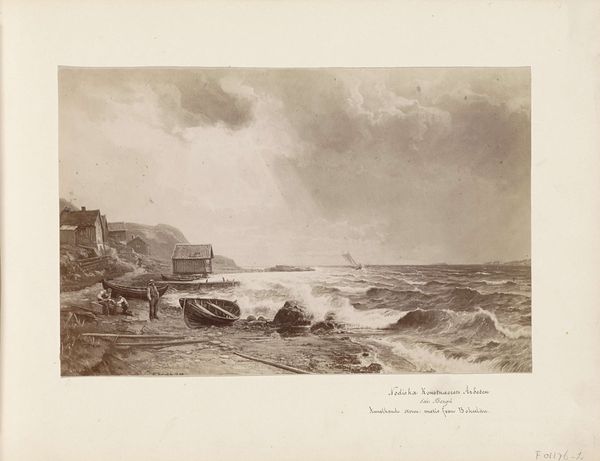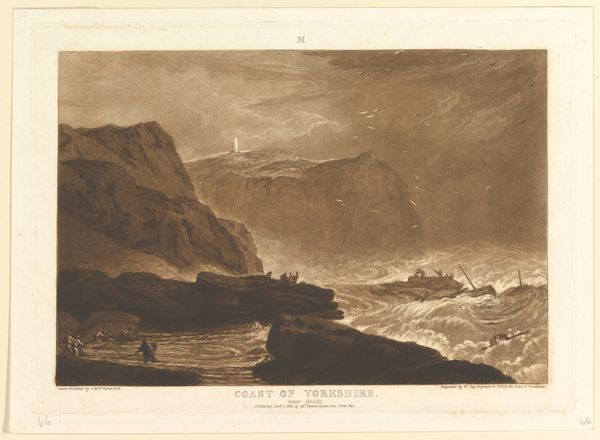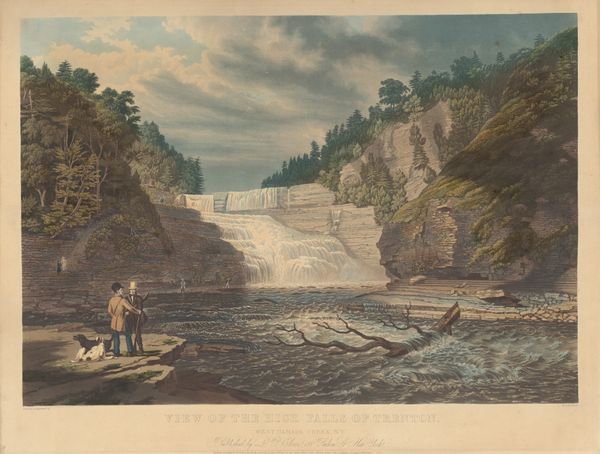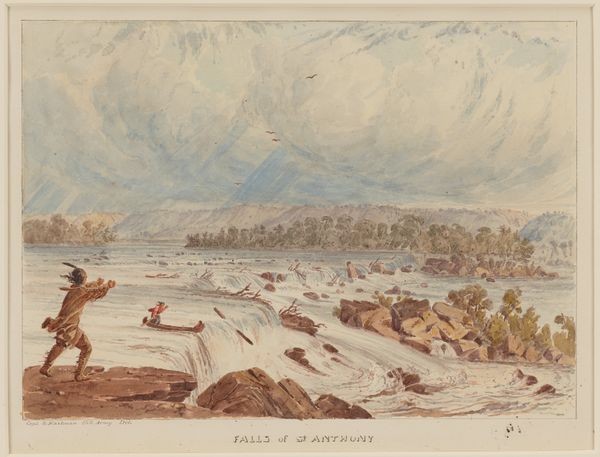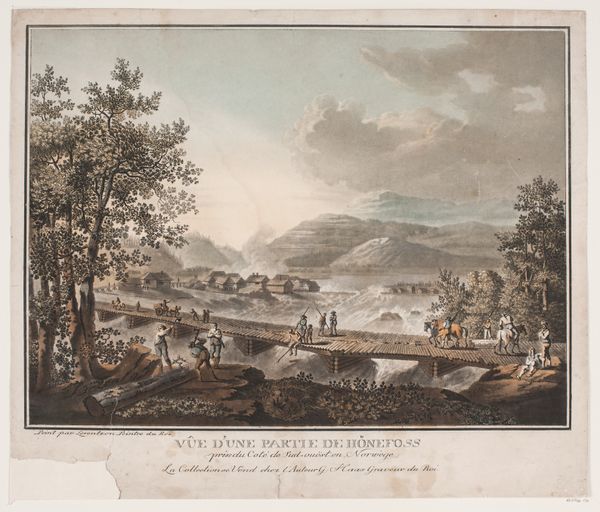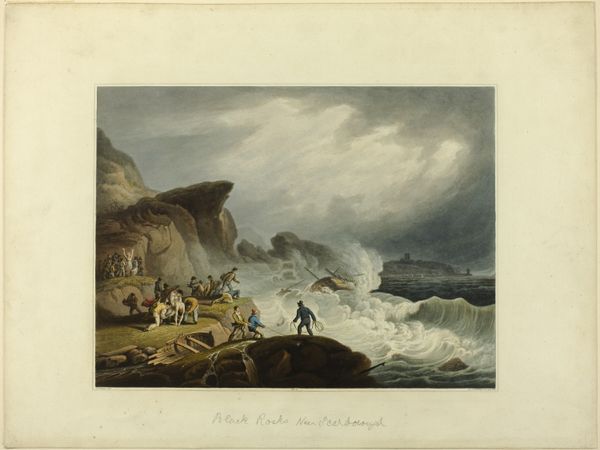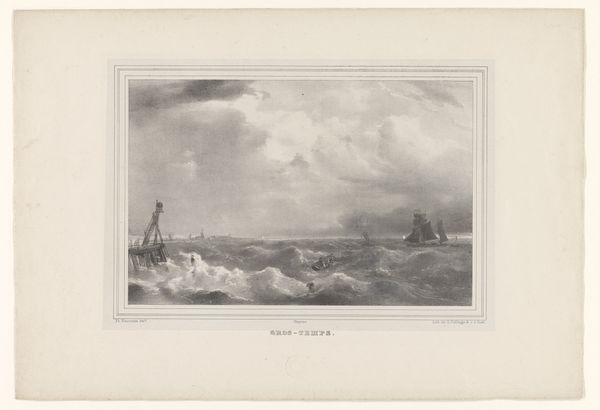
Vûe de la prémière chûte d'eau de Tisteddal en Norwège 1788 - 1792
0:00
0:00
aquatint, print, watercolor
#
aquatint
# print
#
landscape
#
watercolor
#
watercolour illustration
#
history-painting
#
watercolor
Dimensions: 357 mm (height) x 431 mm (width) (bladmaal)
Curator: Look at the forceful drama of this piece; Georg Haas captured "Vue de la premiere chute d'eau de Tisteddal en Norwege", or "View of the First Waterfall of Tistedal in Norway," between 1788 and 1792. It’s a watercolour and aquatint print now held here at the SMK. The rush of the falls immediately pulls your eye. Editor: Absolutely, the water is quite striking. There is this romanticized scene unfolding but also clear depiction of the labor. What strikes me immediately is the delicate rendering. It almost seems at odds with the subject, given how immense the power of water must feel here. It's quite beautiful, a little dreamlike. Curator: I find Haas' choice of aquatint particularly fascinating in contextualizing this work. Think about the time; Europe was captivated by depictions of untouched lands, the rise of the picturesque and sublime. These scenes shaped perceptions and bolstered colonial narratives. Even a Norwegian waterfall becomes fodder. Editor: And here we have figures imposed upon that sublimity. Those crossing the bridge with horse and cart and others seated almost carelessly upon a rock… How do these subjects connect? Do they interact or simply exist together in the scene? It's difficult to reconcile this moment to a sense of scale. I am constantly working between their own actions and the context of the scene at hand. Curator: It is quite self-aware in that regard. Aquatint, specifically, allowed for tonal gradations that mimicked the atmospheric perspective, further enhancing this sense of distance and control over nature. The labor becomes picturesque against a scene of wonder. The industry balanced by the force of nature. I am always wondering if we romanticize history as it was being rendered then. Editor: Perhaps what we consider Romanticism itself comes to this balance you’ve described. An awe and an appropriation for what cannot be replicated. That question you’ve put out there asks: Has anything really changed, as far as human response goes? I think of eco-tourism and Instagram travel. New contexts with similar impulses, maybe. Curator: Indeed. The echoes certainly resonate. For me, revisiting this print, it highlights how even seemingly innocent landscape depictions are steeped in historical power dynamics. Editor: And for me, it's a reminder to consider the active role of the viewer – then and now – in shaping the meaning of such images. Thanks for this opportunity.
Comments
No comments
Be the first to comment and join the conversation on the ultimate creative platform.
